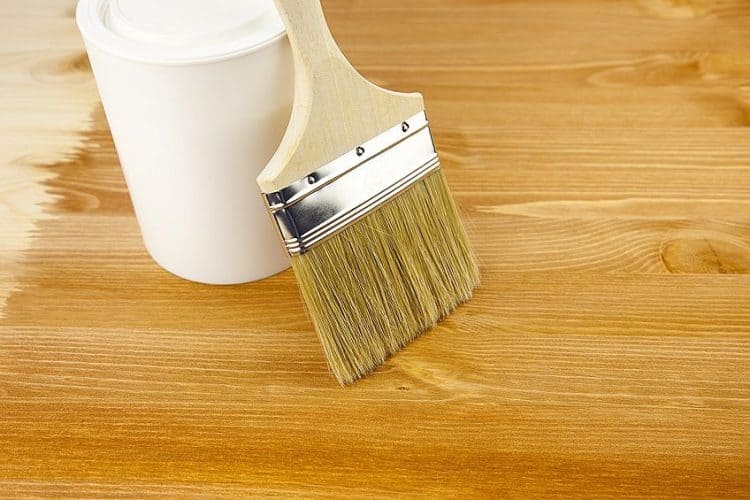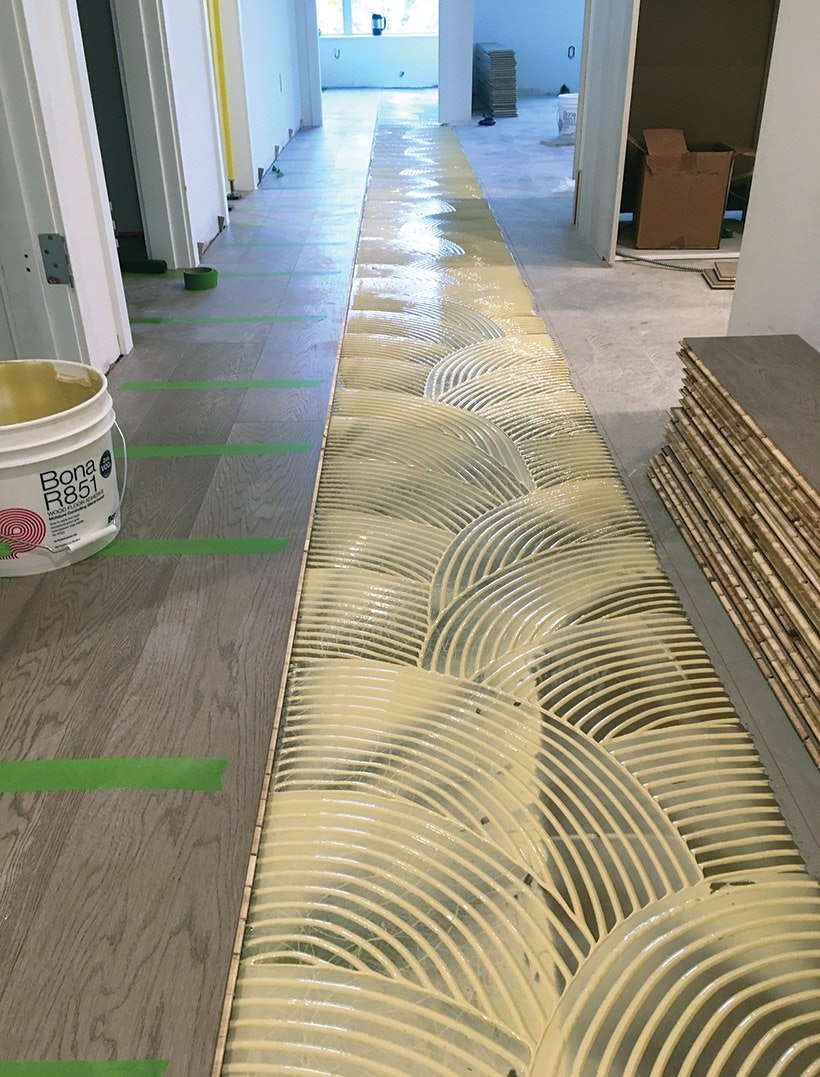The smell of fresh wood, the soothing warmth beneath your feet – there’s a certain charm to hardwood flooring that’s hard to beat. But with the advent of engineered wood flooring, that charm has become even more accessible, offering durability and affordability without sacrificing the beauty. However, when it comes to installation, a question often arises: do I need to glue engineered wood flooring? This can feel like a complicated decision, riddled with conflicting advice and potential risks. But rest assured, this guide will equip you with the knowledge to make an informed choice!

Image: woodhappen.com
Let’s imagine you’re in the midst of a home renovation project, picturing your dream space with elegant engineered wood flooring. As you delve into the installation details, the question of glue pops up, leaving you pondering – is glue necessary? Should you stick with the traditional method, or are there safer alternatives? Fear not, this comprehensive guide will unravel the mysteries surrounding glue for engineered wood flooring, empowering you with the knowledge to make the right decision for your project.
Understanding Engineered Wood Flooring: A Foundation for Decision-Making
Before diving into the glue debate, it’s crucial to understand the mechanics of engineered wood flooring. Think of it as a carefully crafted sandwich, with a top layer of real hardwood veneer meticulously adhered to a core made of plywood or other wood materials. This unique construction provides a multitude of benefits:
- Stability: Engineered wood flooring is less susceptible to warping and expansion than solid hardwood, making it suitable for various environments.
- Durability: The engineered construction provides extra strength, making it highly resistant to dents and scratches, ideal for high-traffic areas.
- Affordability: Engineered wood flooring often comes at a lower cost compared to solid hardwood, making it a budget-friendly option without sacrificing style.
- Versatile Installation: Depending on the type of engineered wood flooring, you can opt for floating installation, which doesn’t require glue, or direct adhesion to the subfloor using glue.
Delving Deep: Glue and Engineered Wood Flooring – A Love-Hate Relationship
Now that we have a solid understanding of engineered wood flooring, let’s address the elephant in the room – glue. The glue debate is multifaceted, with both pros and cons to consider. Here’s a breakdown to help you navigate this decision:
Arguments For Gluing:
- Stronger Bond: Glue creates a robust bond, effectively securing the flooring planks to the subfloor, minimizing movement and potential squeaking.
- Enhanced Stability: Gluing helps to prevent the boards from shifting or lifting, creating a more stable and durable floor.
- Moisture Resistance: The glue barrier can help protect the subfloor from moisture damage, particularly in areas prone to spills or humidity.
- Enhanced Aesthetics: Gluing can eliminate any potential gaps between planks, resulting in a seamless and elegant finish.
Arguments Against Gluing:
- Installation Complexity: Gluing adds an extra layer of complexity to the installation process, requiring specialized tools and greater technical expertise.
- Potential for Mistakes: Applying glue incorrectly can result in uneven flooring, warping, or even damage to the planks.
- Difficulty in Repair: If a plank needs to be replaced, removing glued planks can be time-consuming and could potentially damage the subfloor.
- Limited Flexibility: Glued flooring is less flexible than floating installations, making it less suitable for uneven subfloors or areas with potential for movement.
Understanding the Types of Engineered Flooring
One important factor influencing the need for glue is the type of engineered wood flooring you’ve chosen. Different types have different installation requirements:
- Click-Lock System: These planks are designed with a tongue-and-groove system that allows them to interlock without glue, creating a floating installation.
- Uniclic System: A patented click-lock system known for its ease of installation and relatively strong bond, often used in floating installations.
- Glue-Down Installation: This method requires specific engineered wood flooring designed for glue application and is often preferred for high-traffic areas or where a more stable floor is needed.

Image: mromavolley.com
Floating vs. Glue-Down: Choosing the Right Path for Your Project
The decision between a floating installation and glue-down often boils down to your specific needs and the characteristics of your home:
Floating Installation:
- Ideal for: Areas with slight subfloor imperfections, ease of installation, potential for future reinstallation.
- Pros: Minimal preparation, quick and relatively easy installation, suitable for uneven subfloors, easy to replace individual planks.
- Cons: May be susceptible to movement or noise, not as durable as glued-down installation, not suitable for high-moisture areas.
Glue-Down Installation:
- Ideal for: High-traffic areas, demanding environments, areas prone to moisture, achieving a seamless appearance.
- Pros: Exceptional stability, less prone to movement or noise, suitable for areas with potential for moisture exposure, enhanced durability.
- Cons: Requires more preparation and specialized tools, difficulty in removing planks for repairs, potentially more expensive.
Expert Insights: Navigating the Glue Dilemma
When it comes to expert advice, opinions vary based on specific scenarios. But most agree that glue is not always necessary for engineered wood flooring, especially for click-lock systems. However, for high-traffic areas, moisture-prone environments, or if you seek maximum stability, glue-down installations may prove more advantageous. Always consult with a qualified flooring professional who can evaluate your specific situation and guide you towards the best solution for your project.
Do I Need To Glue Engineered Wood Flooring
The Glue Decision: Empowering Yourself with Knowledge
Ultimately, the decision to glue or not glue engineered wood flooring rests in your hands. We’ve dissected this complex topic, shedding light on the pros and cons of each approach, and equipping you with the knowledge to make an informed choice. Consider your specific project requirements, your level of expertise, and your budget when making this decision. Remember, consulting with a flooring professional can be invaluable for personalized guidance and expertise.
Don’t hesitate to embark on this exciting journey of home renovation, armed with the knowledge to make informed decisions about your flooring! Whether you’re embracing the simplicity of a click-lock floating installation or seeking the robust stability of a glue-down approach, your dream space awaits with elegant engineered wood flooring tailored to your specific needs. Share your experiences and questions in the comments below, and let’s continue learning and growing together in the world of home improvement!





